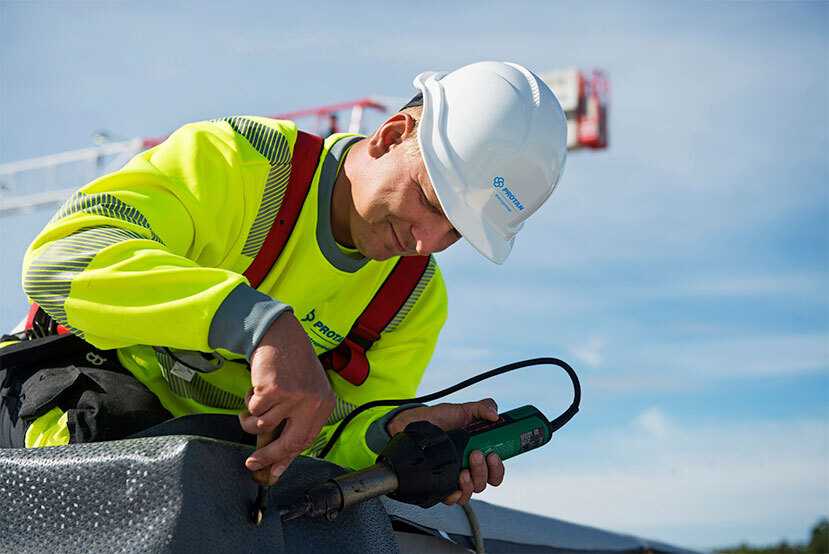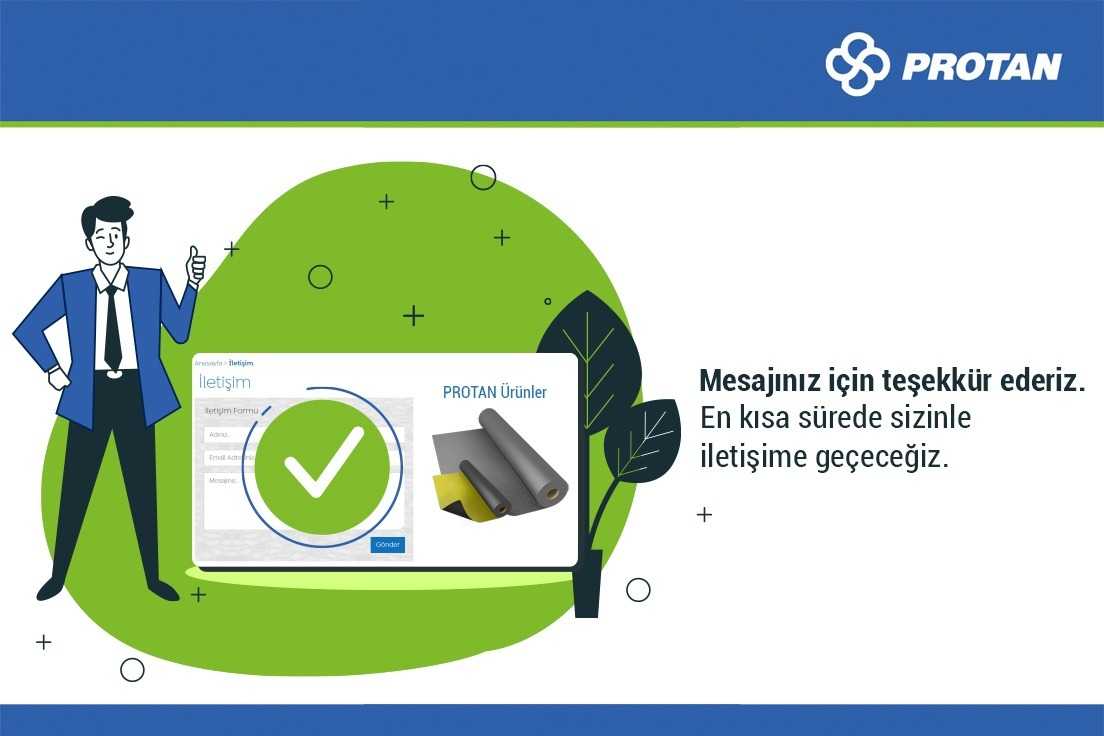FPO Membrane
Protan, an industry group based in Norway, the world leader in synthetic membrane technology, also offers trouble-free service and solution offers in Turkey. Roofs and membranes are Protan Group's largest business and the brand; offers high quality membranes for wet rooms and terraces. Also; also supplies radon protective membranes for new builds and renovations. In addition, Protan Group is among the pioneers of the sector with its solutions tailored to the needs of its customers.
What is FPO Membrane?
FPO membranes; It consists of flexible polyolefin fibers and is used in the cable industry, the film industry, the injection industry and the production of waterproofing membranes. Membrane is basically a name used for selectively permeable biological structures, and FPO membrane is known as a thin material used to prevent water from coming into contact with another material on which it is placed. Waterproofing membranes are produced from different materials in various sizes and thicknesses.
What Does FPO Membrane Do?
Synthetic waterproofing membranes reinforced with polyester felt called FPO membrane; It provides an extremely successful use in green roof, terrace roof, metal roof insulation and foundation bundling applications.
One of the most important requirements of constructions is waterproofing. Membranes, which are waterproofing materials, can be used to protect the structural integrity of buildings and structures. In order to prevent problems that may arise due to insufficient waterproofing and its application, the use of FPO membrane, which is an effective material that can meet waterproofing needs, is often preferred.
FPO membranes; It can be used in many different applications such as concrete pavement while it is created to prevent water from compromising the structural integrity of the concrete. Products that are immersed in water where corrosion is important can also be coated.
The usage area of membranes is quite wide and membranes can be used in many places where insulation is needed in a building. Sections where the waterproofing membrane is used; terraces, balconies, toilets, under and around basements, concrete water tanks, swimming pools, landscaped concrete floors and gutters.
What are the Advantages of FPO Membrane?
FPO membranes, which are thermoplastic polyolefin-based waterproofing membranes, offer a long service life due to their resistance to atmospheric conditions, plant roots and UV rays as well as high tearing, abrasion and puncture resistance. In addition, it is often preferred to be used due to its environmentally friendly formula. Since its resistance to UV rays is high, there is no aging or hardening over time. Since it does not contain chloride or plasticizer, it does not emit harmful substances to the environment. Also; It can be seen that it attracts attention with its high elasticity and mechanical strength.
What are the FPO Membrane Differences?
FPO membrane; Since it is produced without additives, it does not lose its structural properties when used with a specially designed raw material. The welding degree of FPO membranes, which are more resistant to abrasion than bitumen membranes, is between 300 - 550 degrees Celsius. FPO membranes are applied as a single layer, unlike traditional bitumen cover systems. FPO membranes, which do not contain toxic gases as well as do not contain plasticizers and chlorine, are considered one of the environmentally friendly materials. FPO membranes; It can maintain its dimensional stability even in high and sudden temperature changes. FPO membranes, which allow minimization of labor risks due to the use of automatic welding machines; It also eliminates the need for protection concrete due to its types that fully adhere to the freshly poured concrete. The fact that it is fast and practical to use in single-sided curtain applications is also among the reasons why FPO membrane is often preferred. FPO membranes, which are highly resistant to sparks and sea water, also have a flame retardant structure.
How to Use FPO Membrane?
FPO membranes; mechanical fastening and overlap welding on trapezoidal, sandwich and bare roofs; It is applied as a single layer on basic insulations and inverted roofs by using free-laid and overlap welding methods. In addition, it is combined homogeneously by the use of automatic welding machines from overlapping points.
There should be no pits or protrusions on the floor where FPO membrane application will be made. For these reasons, surface problems on the ground, if any, are eliminated before starting the FPO membrane application. Likewise, before the FPO membrane application, both the surface of the application and its immediate surroundings are cleaned of substances such as soil and mud. In addition, it is among important issues to be careful about the wet and dampness of the floor where the application will be made.
Before starting the FPO membrane applications, the temperature setting of the hot air welding machines to be used is checked and the welding application is made for test purposes. Working temperatures at construction sites can be affected by environmental factors such as wind, humidity and air temperature. For this reason, if there are situations where the ambient temperature is low, it may be necessary to soften the surface of the membrane by heat treatment before application.
All membrane joints; as long as the detail allows, it is done by using automatic welding hot air welding machines. In places where it is not possible for the machine to enter, hot air hand welding machines should be used. On mechanically fixed roofs, the overlap is adjusted to be 8-10 cm.
In the building terrace roof insulation, the membranes are lined up side by side and adhered with 5 cm overlapping with hot air. In special cases, it is also possible to use adhesives for the overlaps. In such cases, the overlap width should be at least 10 cm. Roof parapets, pipes, rain drains and similar elements are covered with detailed parts made of membranes.
On light flat roofs where there is no static additional load, FPO membranes are mechanically fixed to the structure by using special screws. While the overlaps are welded with hot air, the ends of the membranes without a thermal strip can be joined by welding with thermal tapes.
In inverted roof systems, FPO membranes are laid under the thermal insulation. There is no need for mechanical fixation or full bonding. On roofs where mechanical fixation is not possible; the membrane is fixed by sticking it over the entire surface. When this system is used, there is no additional load on the roof. Full bonding system is more suitable for shapeless, unusual and highly sloped roofs such as domes, and thermal insulation materials are used in the parts where the upper level is suitable for bonding. It can be preferred to use rock wool, perlite board or polystyrene boards as heat insulation material.


